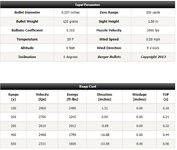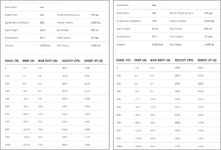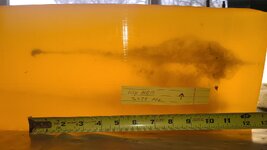Actually, if you look at the attachment it shows 110 grain ELDX vs 178 grain ELDX. You asked for similar bullet construction and these are the same. You asked for similar velocity, and between these two calibers, there is no velocity similarity. One is light and fast and one is heavy and moderate. Both will kill, and I own both. These tables are for factory loaded Precision Hunter ammo.
The point is that bullet expansion is dependent on velocity, period. Every single manufacturer publishes minimum velocities for optimum expansion and terminal performance, not minimum energies.
A larger caliber bullet has a minutely larger diameter, and thus all things being equal, will have a tiny bit larger entry wound. However, at 300 yards, the temporary and permanent wound channels created by the .25-06 going 400 fps faster will be bigger than the .308.
The .25-06 is better than the .308 because it has a velocity advantage from the muzzle and beyond practical yardage. It also has less recoil.
Here is the table for a.300 win mag with the same 178 grain ELDX. I'm not sure how many guys are shooting 300s with a 26" barrel, but for the sake of argument, who cares.
View attachment 599548
Again, the .25-06 has a velocity advantage out to 400 yards where things start to level out. At 500 yards the .25 still leads by a small amount. With a 26" barrel, it would likely maintain a 100fps or more advantage to 500 and beyond. With a fast twist barrel and 133-135 grain bullets the .25 is superior across the spectrum and delivers this performance with a fraction of the recoil.
If you want to shoot larger caliber hard kicking bullets based on your own observations and ballistics testing, by all means use what works for you. However, it is a disservice to tell folks on here that bigger is always better.






